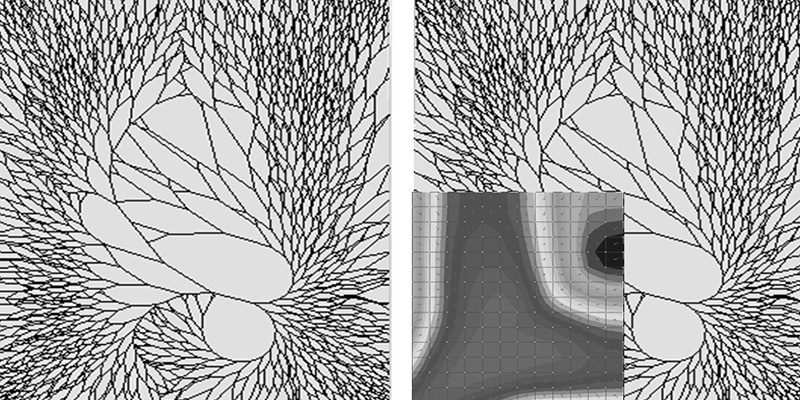Downloads
DOI:
https://doi.org/10.7480/jfde.2014.3-4.908Keywords:
Blast, facade design, hazard, mitigation, computer softwareAbstract
In current blast enhancement design strategies, to resist the effects of an accidental explosion, a facade system is commonly designed to behave in-elastically and undergo large deformations. The large deformation of the facade system leads to high blast energy dissipation, subsequently reducing the blast energy transferred to the main structure. In addition to the blast resistance of the facade system, human injuries due to glass fragmentation within the vicinity of the facade system should also be minimized in order to meet the required safety levels. Overall building safety can be optimized by balancing blast energy dissipation and glass fragmentation. Recently, Permasteelisa Group has developed an innovative design tool to optimize blast-enhanced facades using an equivalent MDOF approach. A novel fragmentation tool has been proposed to assist this design procedure. This paper presents various critical parameters considered in blast-enhanced facade analysis, the experimental validation of these parameters and their influence in the design optimization process.
How to Cite
Published
Issue
Section
License
Copyright (c) 2015 Guido Lori, Raymond Lumantarna, Tuan Ngo, Cuong Nguyen

This work is licensed under a Creative Commons Attribution 4.0 International License.
Authors or their institutions retain copyright to their publications without restrictions.
References
Applied Research Associates. (2005). WINdows Glazing Analysis Response and Design (WINGARD). Property of the United States Government.
ASTM E1300-12 (2102). Standard Practice for Determining Load Resistance of Glass in Buildings, ASTM International.
Bennison, S. J., Sloan, J. G., Kristunas, D. F., Buehler, P. J., Amos, T., and Smith, C. A. (2005). Laminated glass for blast mitigation: Role of interlayer properties, Proc. Glass Processing Days: The 9th international glass conference,Tampere, Finland, 17-20.
Biggs, J. M. (1964). Introduction to Structural Dynamics. New York: Mc Graw-Hill.
Beauchamp, E. K., and Matalucci, R. V. (1998). Dynamics of Window Glass Fracture in Explosions, Sandia National Laboratories Report SAND98-0598, Albuquerque, NM.
Bouchbinder, E., Mathiesen, J., Procaccia, I. (2005). Branching Instabilities in Rapid Fracture: Dynamics and Geometry, Physical Review E 71 (5), 056118.
Ellis, B. R.(1991). Static Testing of Glazing for Property Services Agency, Report no. TCR28/91, BRE Structural Performance Division Garston, Watford.
Ellis, B. R., and Beak, M. (1992). Static Testing of Glazing phase II, Client report GIO 451, BRE Structural Performance Division.
Grady, D. E. (2008). Fragment Size Distributions from the Dynamic Fragmentation of brittle solids. International Journal of Impact Engineering 35, 1557-1562.
Griffith, A. (1921). The phenomena of rupture and flow in solids, Philosophical Transactions of the Royal Society of London Series A, Containing Papers of a Mathematical or Physical Character, Vol. 221 (pp. 163-198).
Haldimann, M. (2006). Fracture strength of structural glass elements-analytical and numerical modelling, testing and design, These EPFL No 3671, Ercole Polytechnique Federale de Lausanne (EPFL).
Hinman, E. (2011). Blast Safety of the Building Envelope. In: Whole Building Design Guide, National Institute of Building Sciences.
Hooper, P. A., Blackman, B. R. K. and Dear, J. P. (2012). The mechanical behaviour of polyvinyl butyral at different strain magnitudes and strain rates, Journal of Material Science, 47, 3564-3576.
ISO 16933:2007 (2007). Glass in building - Explosion-resistant security glazing - Test and classification for arena air-blast loading, 22.
Iwasaki, R. and Sato, C. (2006). The influence of strain rate on the interfacial fracture toughness between PVB and laminated glass, Journal de Physique IV (Proceedings), 134, 1153-1158.
Iwasaki, R, Sato, C., Lataillade, J. L., Viot, P. (2007). Experimental study on the interface fracture toughness of PVB (polyvinyl butyral)/glass at high strain rates, International Journal of Crashworthiness, 12(3), 293-298.
Kuntsche, J. and Schneider J. (2014). Mechanical behaviour of polymer interlayers in explosion resistant glazing, Challenging Glass 4 & Cost Action TU0905 Final Conference, 447-454.
Lumantarna, R., Nguyen, C., Zobec, M., Ngo, T. (2012). Pressure Correction in Water-bag Testings to Investigate Post Cracked Behaviour of Laminated Glass, Australasian Conference on the Mechanics of Structures and Materials (ACMSM) 22, Sydney, Australia.
Marchand, K. A., Conrath, E. J., Stevens, D. J., Meyer, B. (2006). Blast induced glass hazards: a comparison of design approaches and recent researches. In: Structures under Shock and Impact.
Morison, C. (1999). Response of Glazed Facades to Blast Loading. MSc Dissertation, University of Westminster, Westminster, UK.
Morison, C. (2007). The resistance of laminated glass to blast pressure loading and the coefficients for single degree of freedom analysis of laminated glass, PhD Thesis, Cranfield University, Cranfield, UK.
Morison, C., Zobec, M., and Frenceschet, A. (2007). The measurement of PVB properties at high strain rates, and their application in the design of laminated glass under bomb blast, International Symposium on the Interaction of the Effects of Munitions with Structures.
Neda, Z., Mocsy, A. and Bako B. (1993). Structures obtained by mechanical fragmentation of glass plates. Material Science and Engineering A169, L1-L4.
Newmark, N. M. (1956). An engineering approach to blast resistant design, American Society of Civil Engineers Transactions, Paper No. 2786, Vol. 121, 45.
Norville, H. S., Harvill, N., Conrath, E. J., Shariat, S., Mallonee, S. (1999). Glass related injuries in the Oklahoma City Bombing, Journal of Performance of Constructed Facilities, ASCE, 13(2), 50-56.
Norville, H. S. and Conrath, E. J. (2001). Considerations for blast-resistant glazing design, Journal of Architectural Engineering, 7(3), 80-86.
VIRACON. (2004). Laminated Glass for Blast Mitigation. Owatonna.
Wang, J. (1986). Fracture and stress Pattern Correlations in Glass Plates, MSc Thesis, Texas Tech University.
Wang, J. and McDonald, J. R., (1986). Fracture and Stress Pattern Correlations in Window Glass Plates, Submitted to Eastern Space and Missile Center (ESMC/SEM) Patrick Air Force Base Florida 32925, Glass Research and Testing Laboratory, Texas Tech University, Lubbock, TX.
Zobec, M., Lori, G., Ngo, T. (2012). Blast Enhanced Facades for Tall Buildings – A True Balanced Integrated Design Approach, Proceedings of the Council for Tall Buildings and Urban Habitat (CTBUH) 9th World Congress; Shanghai, PRC (pp. 867-87).
